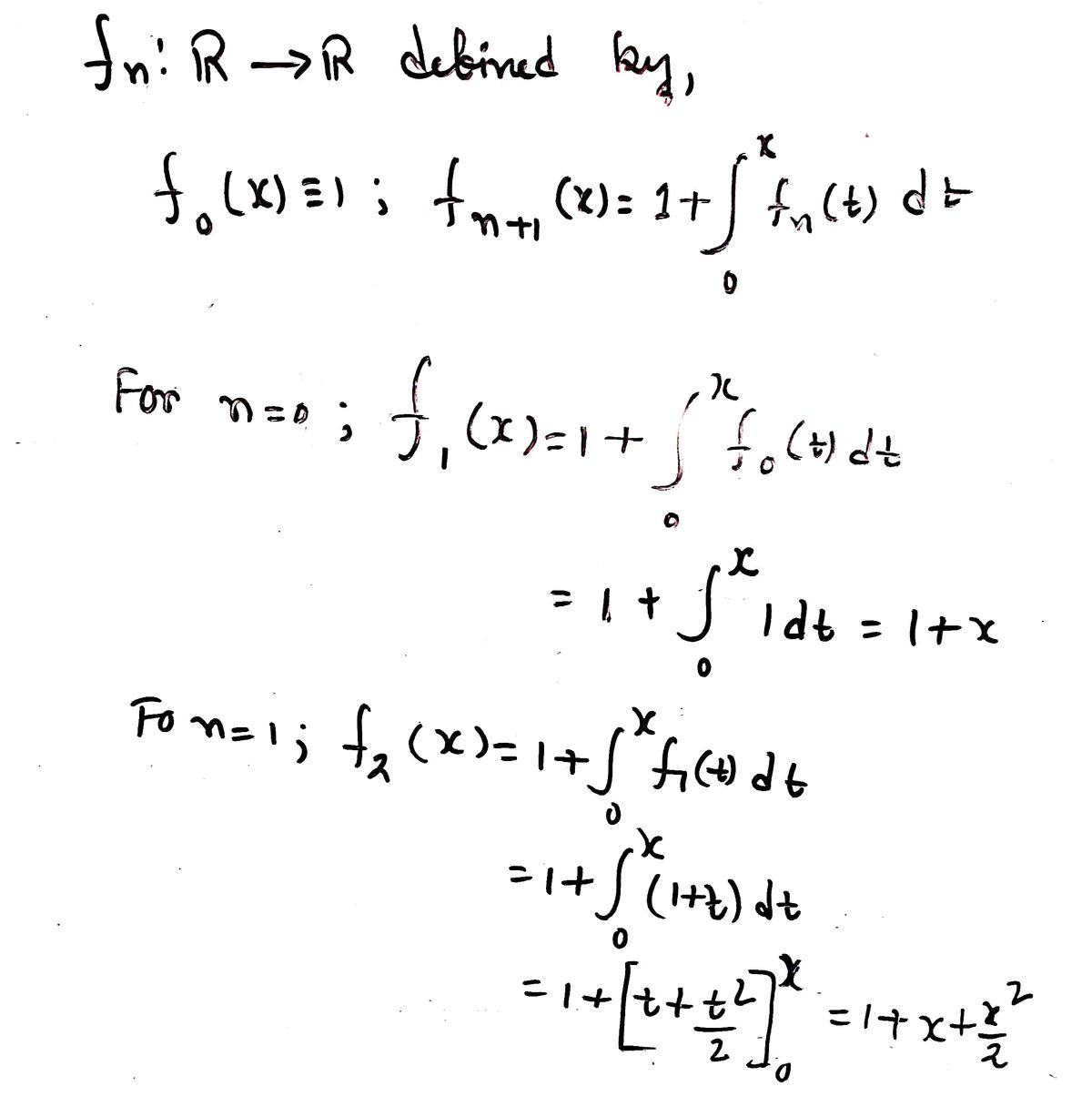5. In future courses, you'll meet sequences of functions. For instance, consider we could define a sequence (fn) of functions fn: R→ R inductively via fo(x) = 1, fn+1(x) :=1+ for fn (1) dt Compute the functions f₁, f2 and f3. The sequence (fn) should seem familiar if you think back to elementary calculus; why?
5. In future courses, you'll meet sequences of functions. For instance, consider we could define a sequence (fn) of functions fn: R→ R inductively via fo(x) = 1, fn+1(x) :=1+ for fn (1) dt Compute the functions f₁, f2 and f3. The sequence (fn) should seem familiar if you think back to elementary calculus; why?
Algebra & Trigonometry with Analytic Geometry
13th Edition
ISBN:9781133382119
Author:Swokowski
Publisher:Swokowski
Chapter3: Functions And Graphs
Section3.2: Graphs Of Equations
Problem 78E
Related questions
Question
![5. In future courses, you’ll meet sequences of *functions*. For instance, consider we could define a sequence \((f_n)\) of functions \(f_n : \mathbb{R} \to \mathbb{R}\) inductively via
\[
f_0(x) \equiv 1, \quad f_{n+1}(x) := 1 + \int_0^x f_n(t) \, dt
\]
Compute the functions \(f_1, f_2\) and \(f_3\). The sequence \((f_n)\) should seem familiar if you think back to elementary calculus; why?](/v2/_next/image?url=https%3A%2F%2Fcontent.bartleby.com%2Fqna-images%2Fquestion%2F3ada9a20-cfc4-4295-96e5-fd4aa8bf1cec%2F4890289e-77ad-4285-b6b1-91d902c0b4c2%2Fyo099b8_processed.png&w=3840&q=75)
Transcribed Image Text:5. In future courses, you’ll meet sequences of *functions*. For instance, consider we could define a sequence \((f_n)\) of functions \(f_n : \mathbb{R} \to \mathbb{R}\) inductively via
\[
f_0(x) \equiv 1, \quad f_{n+1}(x) := 1 + \int_0^x f_n(t) \, dt
\]
Compute the functions \(f_1, f_2\) and \(f_3\). The sequence \((f_n)\) should seem familiar if you think back to elementary calculus; why?
Expert Solution
Step 1: f1 and f2

Step by step
Solved in 3 steps with 3 images

Recommended textbooks for you

Algebra & Trigonometry with Analytic Geometry
Algebra
ISBN:
9781133382119
Author:
Swokowski
Publisher:
Cengage

Algebra & Trigonometry with Analytic Geometry
Algebra
ISBN:
9781133382119
Author:
Swokowski
Publisher:
Cengage